5 Types of Grosbeak Birds You Should Know
Updated: Aug. 01, 2023
Five birds share the name grosbeak and sport thick bills—but the similarities stop there. Look for these colorful fliers throughout the U.S.
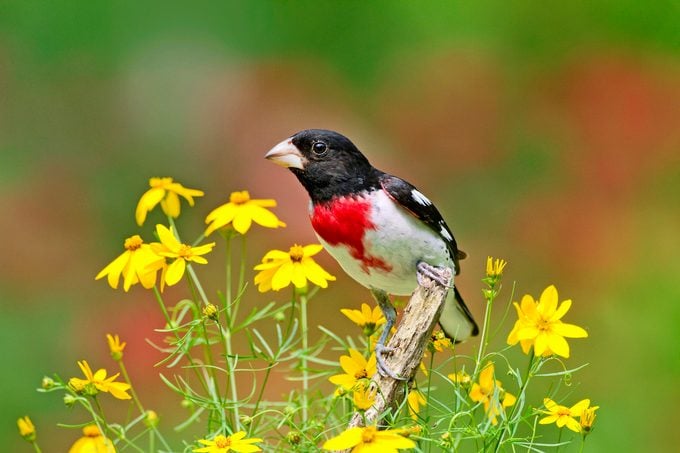
Named for their oversize beaks, grosbeaks use this handy utensil to crack tough seeds from the scrubby field edges of the Southeast to the boreal and montane forests of the North and West. Curiously, despite their similar beaks, these grosbeak bird species aren’t all related.
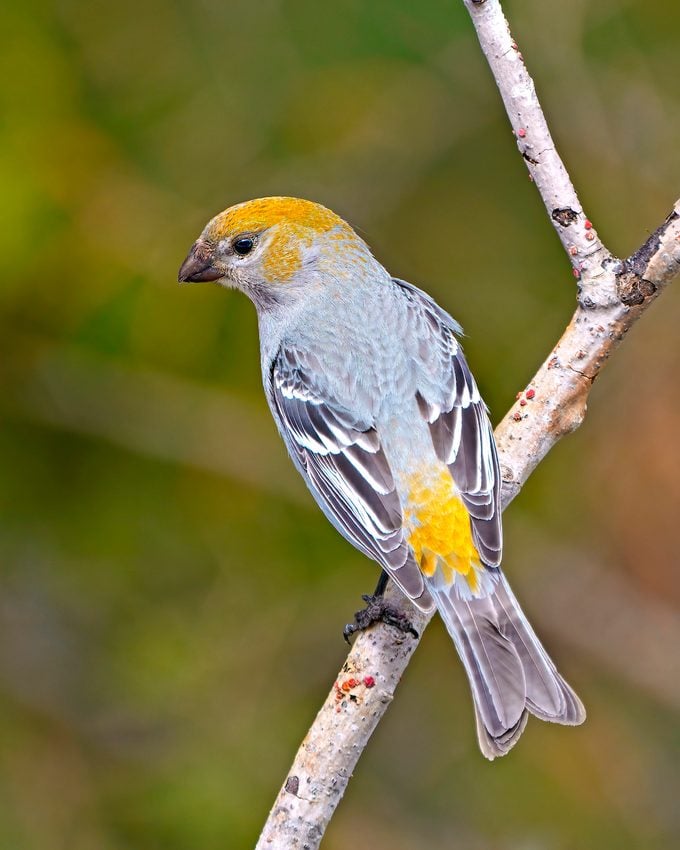
Pine grosbeaks are fancy finches, while the evening, rose-breasted, black-headed and blue grosbeaks are all related to cardinals, buntings and tanagers. Ashley Peters, a conservation communications professional with over a decade of experience bird-watching from Alaska to Louisiana, says grosbeaks are some of her favorite birds. “They are a bit out of the ordinary,” she says.
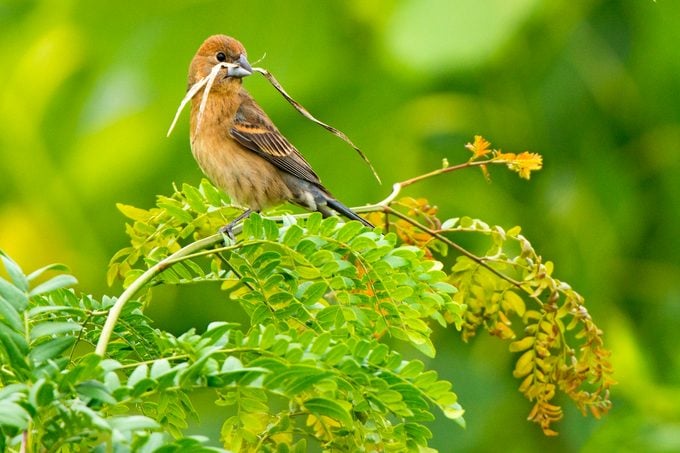
Grosbeaks fill a variety of habitat niches but most will visit feeders at least occasionally. “They are more special to see at feeders because you don’t see them quite as often,” Ashley says.
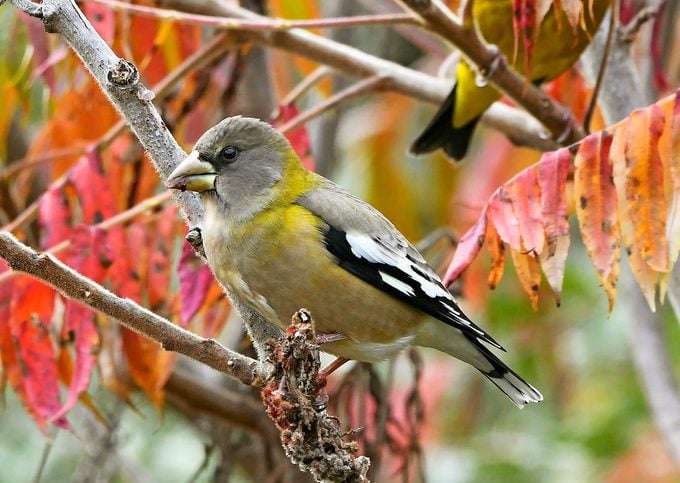
Male grosbeaks are among the most stunning birds out there. The females have a more subtle beauty. Grosbeaks, especially the females, can look quite similar to house, purple and Cassin’s finches, but “the thicker, more substantial bills help give them away,” Ashley says. The best part is that these species are generally quite social, so you’ll rarely see just a single bird.
Check out 15 outstanding pictures of rose-breasted grosbeaks.
Rose-Breasted Grosbeak
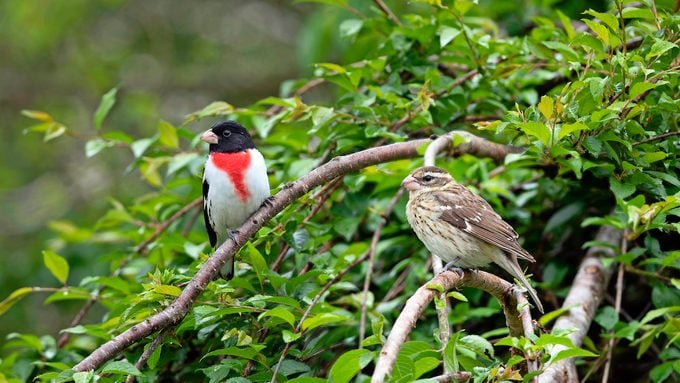
- Notable field marks: Males are nearly unmistakable, with snappy black-and-white patterns offset by bright red chests. Females and young birds look like oversized finches with a yellowish hue, fine streaks and a bold white eyebrow stripe.
- Favorite backyard foods: Rose-breasted grosbeaks stop at hopper and tray feeders full of sunflower seeds during spring migration. They’ll also nibble at fruit and jelly.
- Nesting habits: Breeding from the Great Plains to the East Coast, they often select trees near forest edges or in more open, parklike woods.
- Migration notes: The spring arrival is much anticipated throughout the Midwest and eastern U.S. In the fall, look for them snacking on berries as they move south.
- Fun fact: The lovely song of the rose-breasted grosbeak is described as that of a robin who took singing lessons.
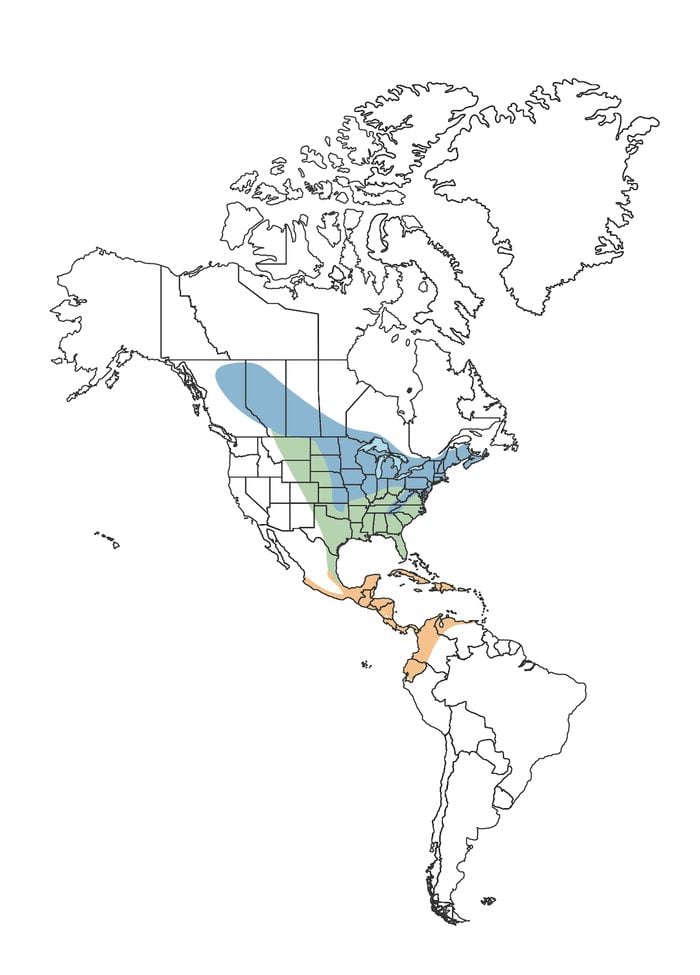
Blue Grosbeak
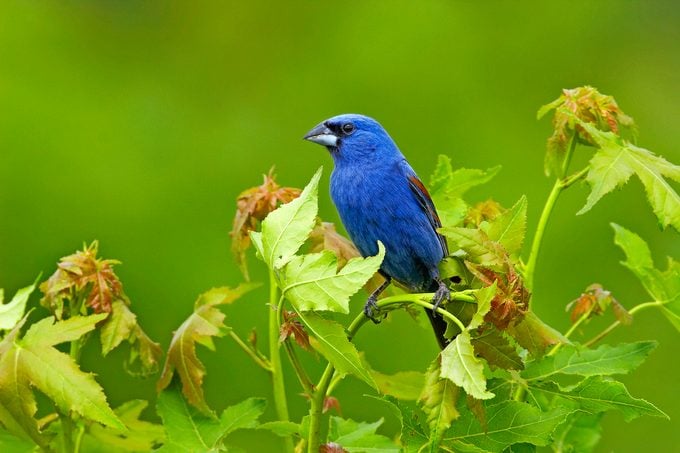
- Notable field marks: Cinnamon to chestnut brown wing bars are a feature for blue grosbeaks. Males are vibrant blue, while females and immature males have rich brown heads and show hints of blue along the backs, wings and tails. Watch for blue grosbeaks to twitch their tails sideways.
- Favorite backyard foods: In addition to seeds, blue grosbeaks are not afraid of eating bigger bugs such as the praying mantis, Ashley says.
- Nesting habits: Blue grosbeaks are among the last species to return north and set up breeding territories. Look for them in shrubby areas or scrubby old fields and power line corridors.
- Migration notes: During fall migration, blue grosbeaks tend to fly straight south. In the West, they stick to overland routes arriving in Mexico, but eastern birds cross the Gulf of Mexico and island-hop to wintering grounds in the Caribbean.
- Fun fact: Blue grosbeaks are more closely related to lazuli buntings than they are to other grosbeaks.
Blue grosbeak vs indigo bunting: here’s how to tell them apart.
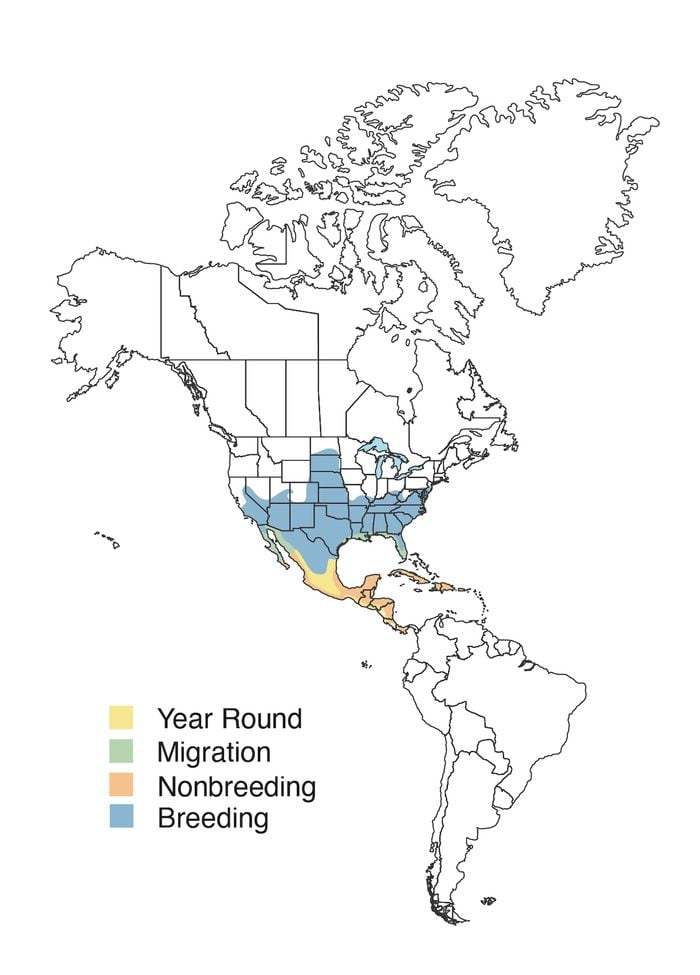
Black-Headed Grosbeak
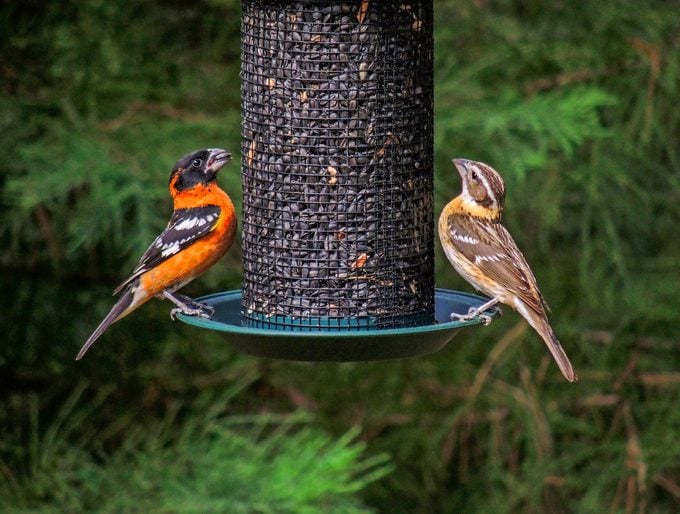
- Notable field marks: Males are black and orange, while females and immature birds are fainter, showing more browns and a bit of streaking. Look for yellow underwings, which are visible in flight.
- Favorite backyard foods: Black-headed grosbeaks eat seeds readily but they’ll come to nectar and fruit feeders too. They also eat insects.
- Nesting habits: They often nest near streams and prefer mixed habitats with high plant diversity. The loose nature of the nests could aid in ventilation and keep eggs from overheating. Males help incubate eggs and raise the young.
- Migration notes: Black-headed grosbeaks are short-distance migrants, moving between southern Canada and the western United States to central Mexico.
- Fun fact: On their wintering grounds, black-headed grosbeaks are one of the few birds that can eat monarch butterflies, a species that is usually poisonous to predators.
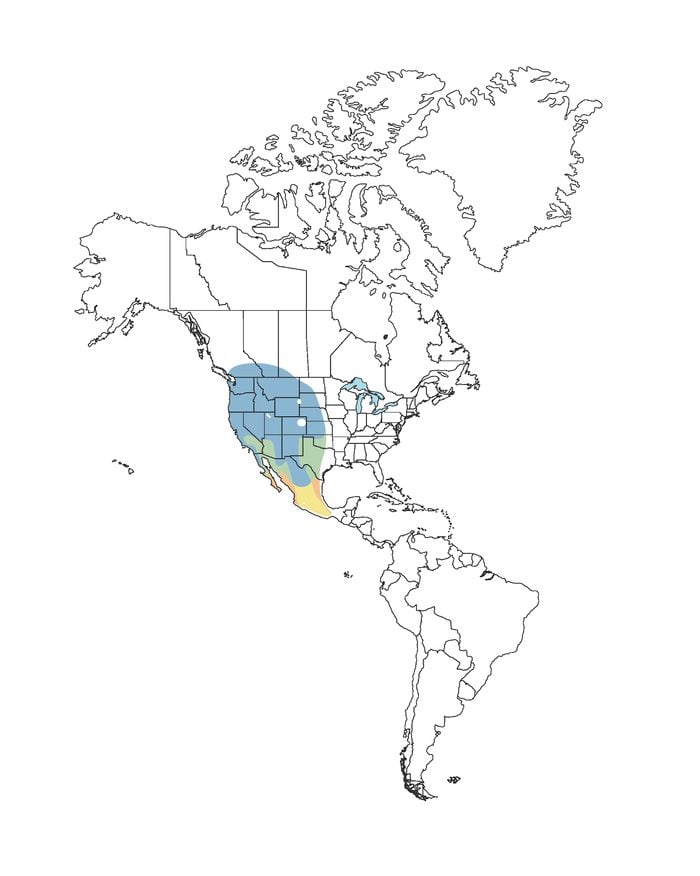
Pine Grosbeak
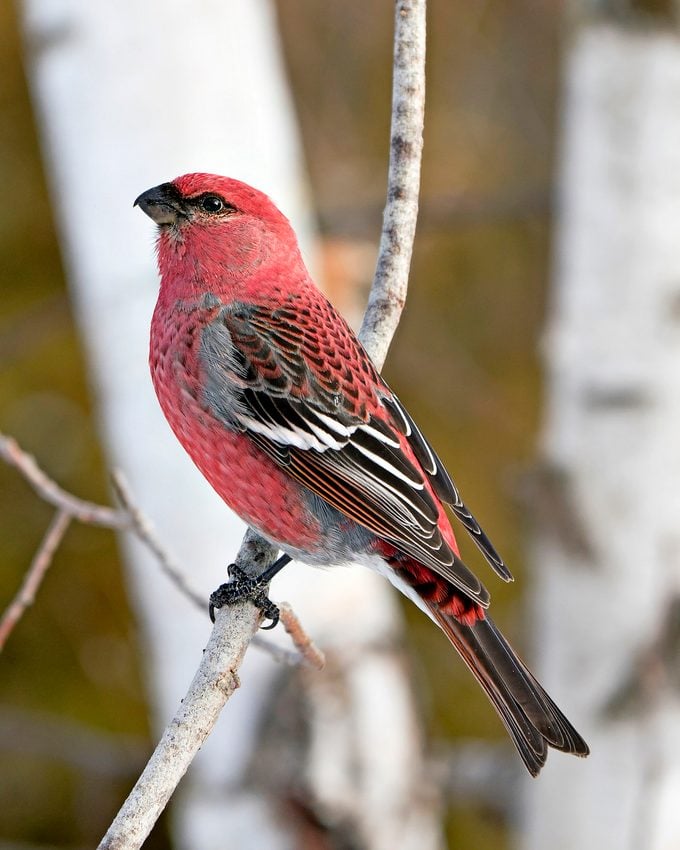
- Notable field marks: Males are a different shade of red than a cardinal, more like a bigger version of a purple finch, according to Ashley. Females and immature males have gray bodies with orangish yellow heads, chests and rumps.
- Favorite backyard foods: They are specialized to eat almost entirely tree buds, seeds and fruits, but they will eat sunflower seeds, suet and fruit on occasion.
- Nesting habits: Pine grosbeaks breed in evergreen forests across the boreal north and along the western mountains.
- Migration notes: Pine grosbeaks might show up in winter. The species is of one of the irruptive finch migrants, and flocks can show up nearly anywhere across the northern U.S.
- Fun fact: Pine grosbeaks are known for their somewhat tame nature and sluggish behavior.
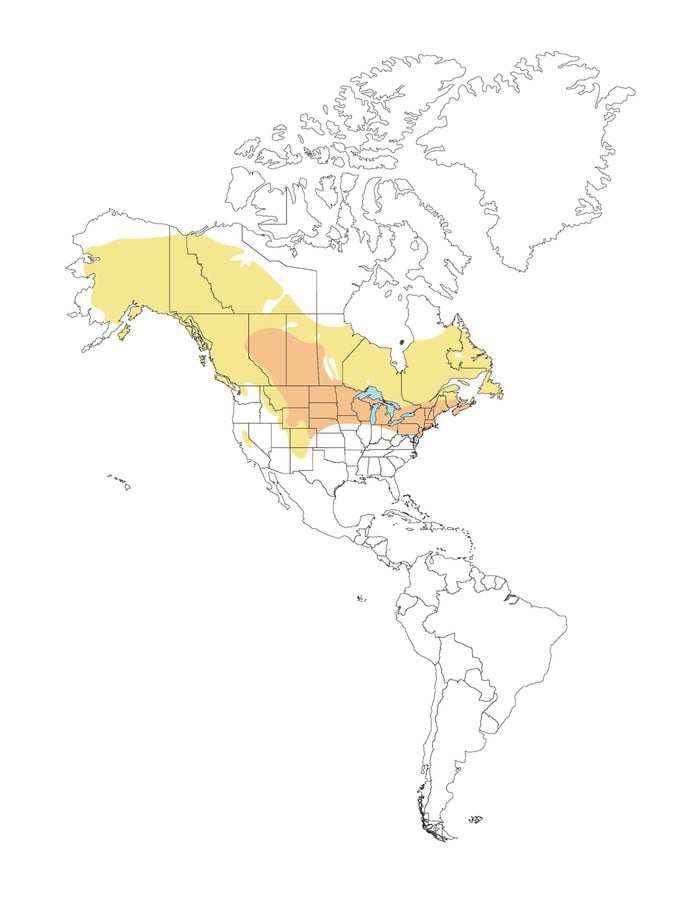
Evening Grosbeak
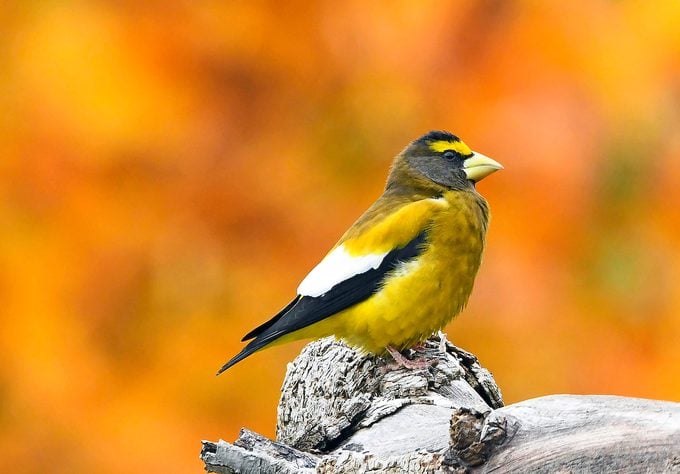
- Notable field marks: White wing patches are conspicuous on evening grosbeaks. Yellow is extensive in males but limited to the necks and flanks on females and immature birds.
- Favorite backyard foods: They enjoy black oil sunflower seed, either in or out of the shell.
- Nesting habits: Historically a bird of the West, this grosbeak has a range that expanded beyond the Rockies in the mid-1800s. By the 1920s, they were regularly spotted in New England. In recent decades, eastern populations seem to be in decline.
- Migration notes: These grosbeaks are classic irruptive migrants, with great numbers moving far south every few years.
- Fun fact: Although evening grosbeaks make simple chirps and calls, the species doesn’t use an elaborate song for establishing territories or attracting mates.
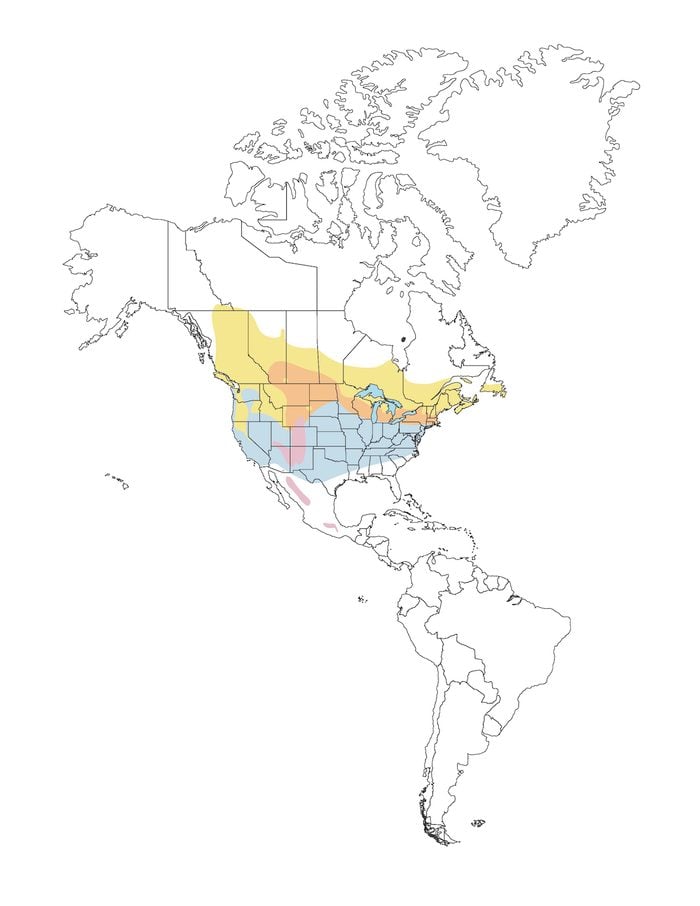
Grosbeak Hybrids
Rose-breasted and black-headed grosbeak hybrids are a regular occurrence where their ranges overlap in the Great Plains. But in 2020, a one-of-a-kind rose-breasted grosbeak and scarlet tanager hybrid was documented in Pennsylvania.
Next, discover 8 types of orioles to look for in North America.
